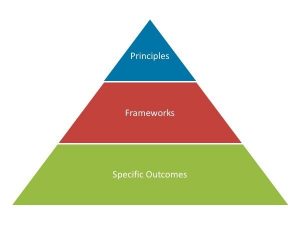When it comes to your marketing strategy, it will require the right blend of approaches. It’s like making a hit record: There are tons of instruments, professionals in the recording studio, and producers on the sidelines, but which combination will make the desired and distinct sound that will attract your audience?
In marketing, this strategic combination is what can make a brand unforgettable, Nat King Cole style!
And that’s why darling, it’s incredible that every business needs a go-to-market (GTM) strategy that is tailored to their unique needs. Like a song of love that clings to me, your audience should be captivated by your new product, brand re-launch, or fresh service. Think of your strategy like a timeless classic song that plays through your head, on and off throughout the years.
It shouldn’t sound like other songs, but it could be classified into a genre. We are going to chat through the four most common GTM strategies: inbound, sales enablement, account-based marketing (ABM), and demand generation. We’ll see what makes them sing their own tune. First, let’s make sure you know … what you don’t know.
Go-to-Market Strategy? You Can Say That Again.
For the sake of word count, HubSpot’s GTM strategy definition works beautifully (in case you have no idea what GTM means … no shame game): A GTM strategy is a step-by-step plan created to successfully launch a product to market. It generally identifies a target audience and outlines a marketing and sales plan. Although each product and market will always require a custom approach, a GTM strategy should identify a key market pain point and position the product as a solution.
Recap (for all the skimmers out there): A GTM strategy is how a company brings a product to market.
There should be strategic planning, competitive research, product testing, and innovation involved in your GTM approach, to effectively manage expectations. Please, throw out that idea of “let’s see what sticks,” and find the GTM strategy that will enable your overall success metrics, ROI and sustainable growth.
It’s just that, well, professionally, I have conducted product launches for multiple CEOs, CMOs, and so on, through a variety of go-to-market strategies—and some with none at all. Needless to say, it doesn’t take much imagination to gauge which of those products were successful.
Go-to-Market Strategies: All for One, but Not One for All!
According to Stefan Groschupf, CEO of SalesHero, all strategies should identify a great:
- Product market fit
- Target audience
- Competitive demand
- Distribution
They might have some commonalities, but it is good to note individual traits of each and not get bogged down in words. There are already so many words on the internet.
Let’s break down the four most common strategies, plus gifs for my visual learners out there.
Inbound
Inbound strategies utilize many forms of marketing—content marketing, blogs, events, search engine optimization (SEO), social media, and more—to create brand awareness and attract new prospects organically at every stage of the Buyer’s Journey.
This methodology is really focused on attracting the right audience, at the right time, with the right content. It is an excellent addition to any marketing plan, or solely on it’s own. It will pay off over time, and it benefits from paid media support to speed up the ROI.
Sales Enablement
Sales enablement strategies focus on increasing sales results and productivity by providing content, training, and coaching services for salespeople for every stage of the sales cycle. This strategy is exceptional for your front-line sales managers, sales representatives, and all-around sales team. It works to support their team first and foremost.
ABM
Account-based marketing strategies are focused on B2B marketing, in which marketing and sales teams meld their expertise to locate, target, engage with, and close deals with high-value accounts through valuable content, technology, comprehensive cross-channel campaigns, and more.
ABM is very useful for companies that have an eye on the big fish. You can prove ROI quickly when you land a big catch, and the team loves to see you reel them in!
Demand Generation
Demand generation strategies include a wide range of marketing activities that can be more outbound or sales-centric than other approaches, using assets like cold calls, email blasts, list buying, TV commercials, and sponsored webinars.
A blend of this approach is common. However, on it’s own, it is not proving as effective as it once was. With changing technology and audience privacy preferences, there are a lot of great elements that are still very useful for marketers.
Unforgettable (Go-to-Market Strategy) in Every Way
Now you are probably itching to use all of these, because they look so appealing! But do yourself a favor and try to narrow it down by first conducting some market research, asking yourself starting questions and identifying what is your:
- Business case
- Market strategy
- Pricing strategy
- Sales strategy
- External marketing plan
- Support system
- Product doing to fit in with your portfolio
- Definition of success
Business & Finance Articles on Business 2 Community
(81)













